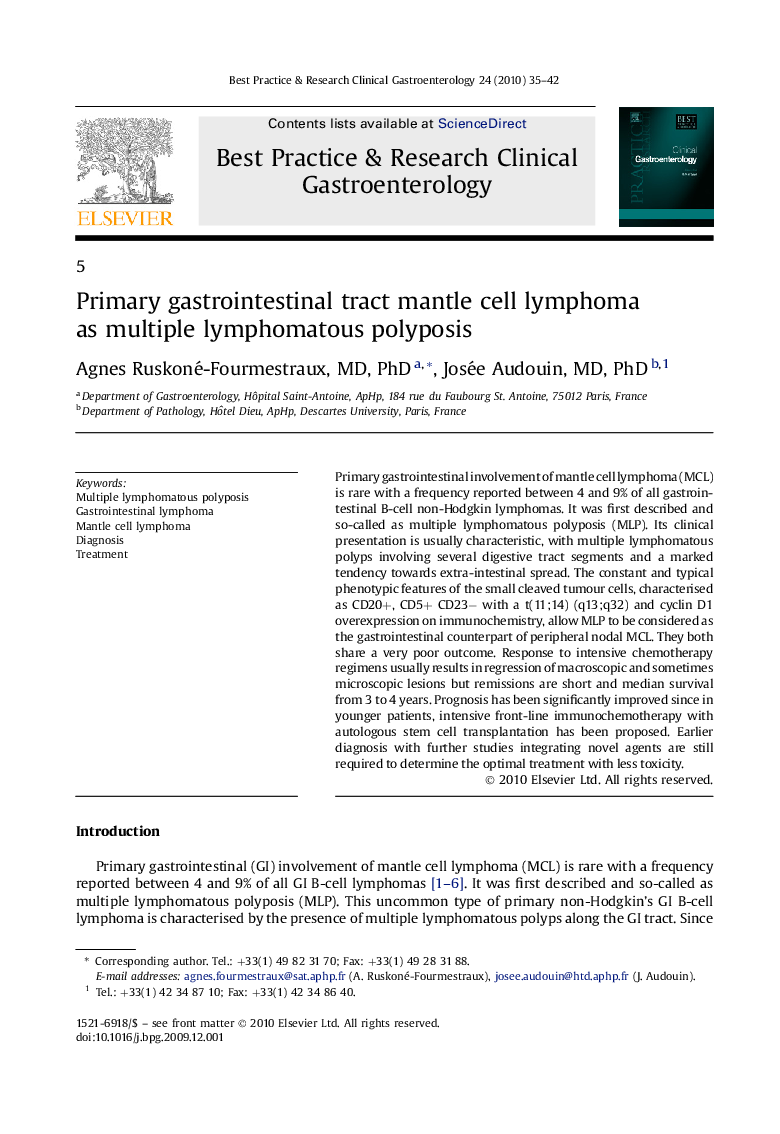| Article ID | Journal | Published Year | Pages | File Type |
|---|---|---|---|---|
| 3254398 | Best Practice & Research Clinical Gastroenterology | 2010 | 8 Pages |
Primary gastrointestinal involvement of mantle cell lymphoma (MCL) is rare with a frequency reported between 4 and 9% of all gastrointestinal B-cell non-Hodgkin lymphomas. It was first described and so-called as multiple lymphomatous polyposis (MLP). Its clinical presentation is usually characteristic, with multiple lymphomatous polyps involving several digestive tract segments and a marked tendency towards extra-intestinal spread. The constant and typical phenotypic features of the small cleaved tumour cells, characterised as CD20+, CD5+ CD23− with a t(11;14) (q13;q32) and cyclin D1 overexpression on immunochemistry, allow MLP to be considered as the gastrointestinal counterpart of peripheral nodal MCL. They both share a very poor outcome. Response to intensive chemotherapy regimens usually results in regression of macroscopic and sometimes microscopic lesions but remissions are short and median survival from 3 to 4 years. Prognosis has been significantly improved since in younger patients, intensive front-line immunochemotherapy with autologous stem cell transplantation has been proposed. Earlier diagnosis with further studies integrating novel agents are still required to determine the optimal treatment with less toxicity.
